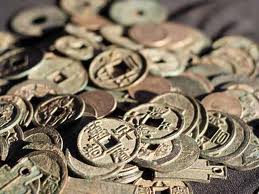Beijing: Archaeologists have excavated about 3,500 kg of ancient coins in China’s Inner Mongolia Region, Xinhua reported today. Most of these coins were in prevalence during the Han Dynasty (202 BC – 220 AD).

Most of the coins were “Huoquan”, the coins commonly used in the Han Dynasty (202 BC – 220 AD), said Lian.
Archaeologists also excavated over 100 casting moulds from the relics of a coin workshop. The moulds are believed to date back to the rule of Emperor Wudi (156 BC – 87 BC) of the Western Han Dynasty and the short-lived Xin Dynasty (45 BC – 23 AD) founded by Wang Mang.
Based on its size and cultural relics uncovered there, Huoluochaideng town is believed to have been a major town in northern China during the Han Dynasty, said Lian.
The findings are significant in the study of the ancient monetary system and casting technology, he added.
– IANS
Image credits: arts.cultural-china.com
The opinions, beliefs and viewpoints expressed by authors, news service providers on this page do not necessarily reflect the opinions, beliefs and viewpoints of Hill Post. Any views or opinions are not intended to malign any religion, ethnic group, club, organization, company, or individual.
Hill Post makes no representations as to the accuracy or completeness of any information on this site page.



